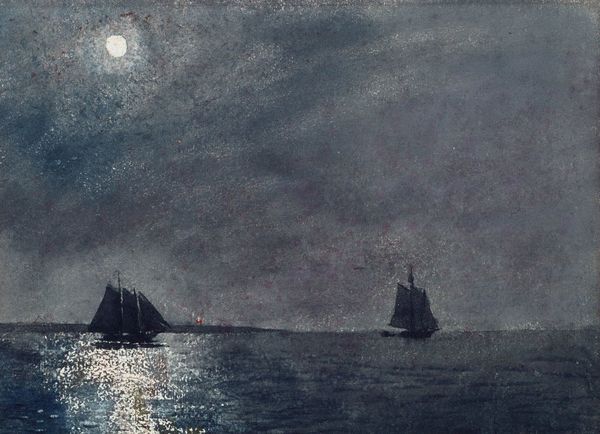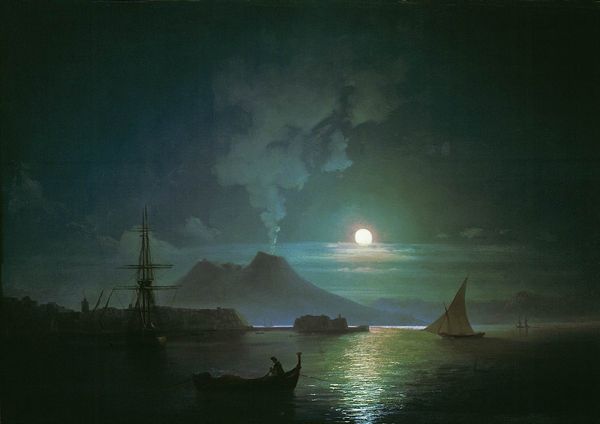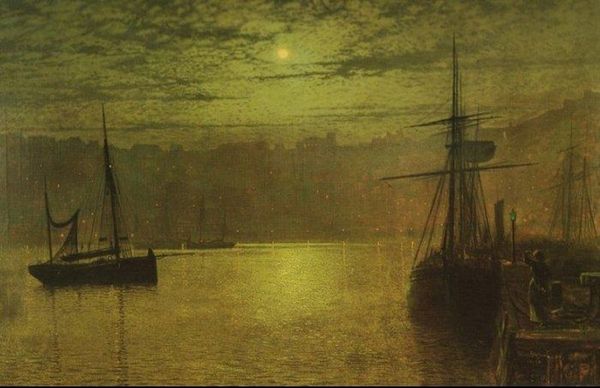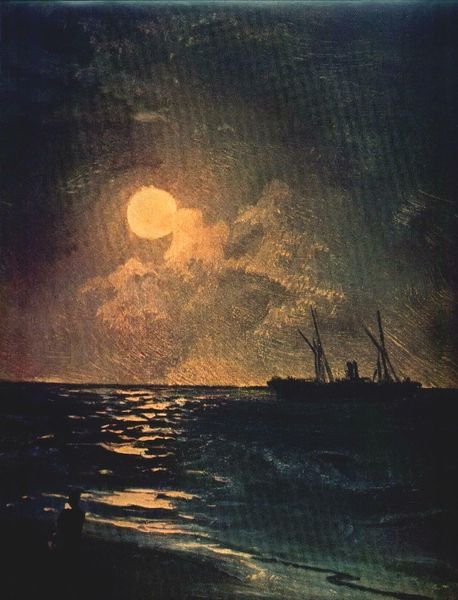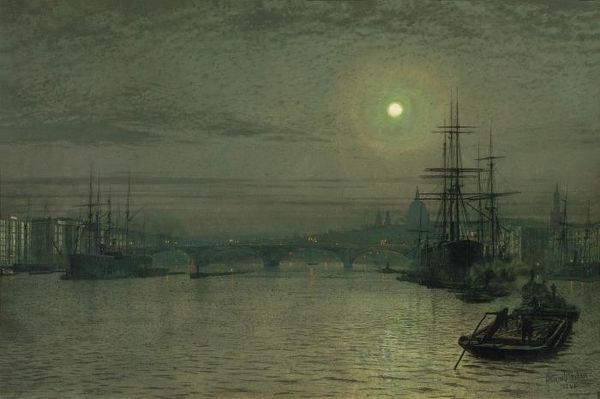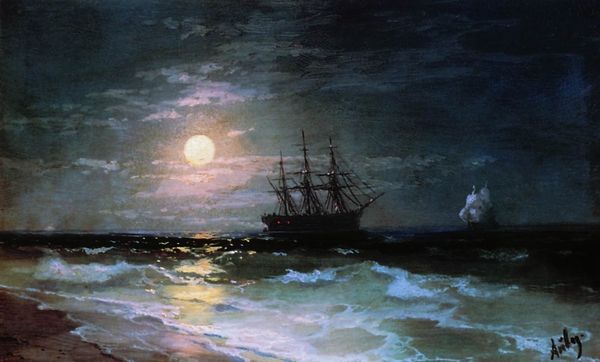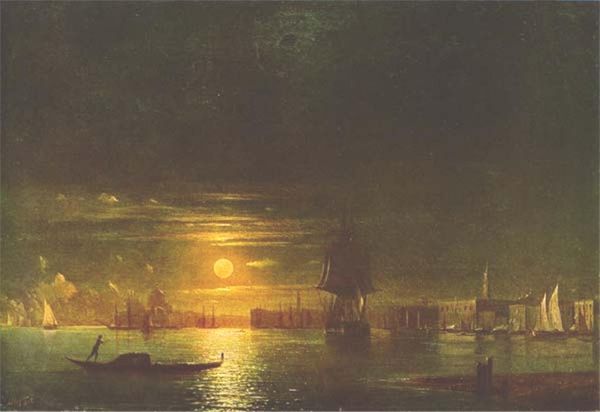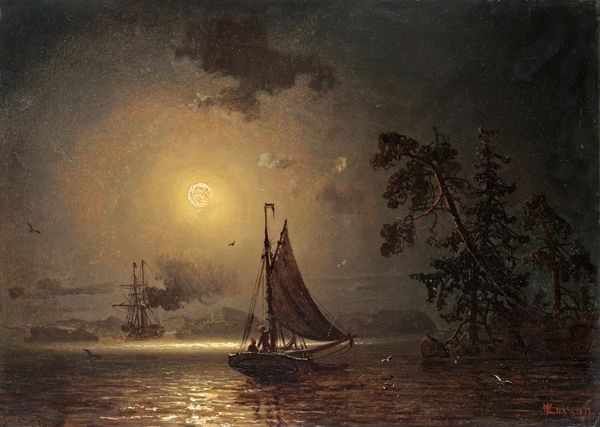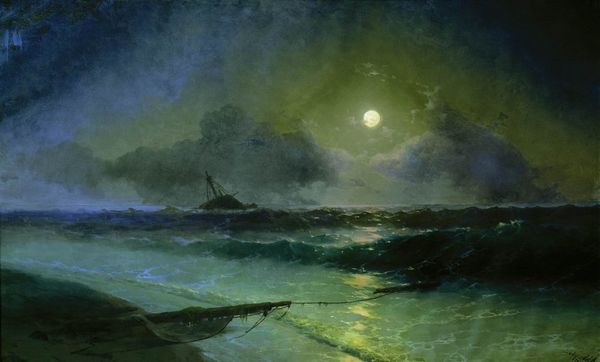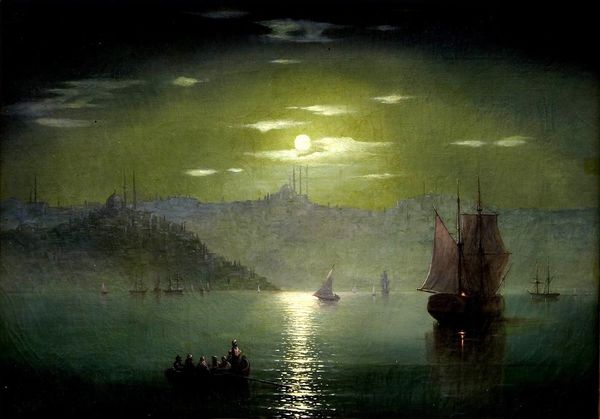
Copyright: Public domain
Curator: I find this nocturne haunting. There’s a profound sense of stillness, almost ominous, in the vast expanse of sea and sky. Editor: This is "Ships in the Stillness of the Night," an oil painting crafted in 1888 by Ivan Konstantinovich Aivazovsky. Aivazovsky, a master of maritime painting, really captures that feeling, doesn't he? Curator: Absolutely. Notice how the moon's reflection creates this shimmering path on the water, drawing the eye forward? And those barely perceptible hints of red within the ships, like the faint embers of a fire... Editor: Yes, red typically signals strong emotional associations—courage, sacrifice, but in some Eastern European folk traditions, also defiance, or revolt. Curator: Fascinating when applied here. In Aivazovsky’s Russia, maritime power had deep geopolitical implications. This image goes beyond simple aesthetic beauty. Imperial naval dominance was being negotiated through artwork itself. Editor: Interesting, how the industrial revolution factors in here as well. One ship is burning something: perhaps oil, creating this massive trail of dark smoke? This could mean all manner of things for this piece: a mark of technological advancement but equally one of coming ecological precarity. Curator: Absolutely. It marks a specific historical moment. Aivazovsky, while celebrated by the Imperial court, subtly acknowledges a changing world through details like the steamship’s prominence in this artwork. It’s almost an elegy for traditional sailing, rendered under a blanket of moonlight and encroaching modernity. Editor: Yes, the romantic spirit tinged with an awareness of its own potential obsolescence. It creates an internal tension in the work, between progress and nostalgia. Curator: Indeed. Seeing this painting now, I’m struck by how it holds these competing visions—of serene beauty and encroaching change, light and darkness, hope and something bordering on despair. It makes you wonder what futures people envisioned when first witnessing the birth of modern technologies. Editor: It feels both timeless and acutely historical, a beautiful paradox.
Comments
No comments
Be the first to comment and join the conversation on the ultimate creative platform.

